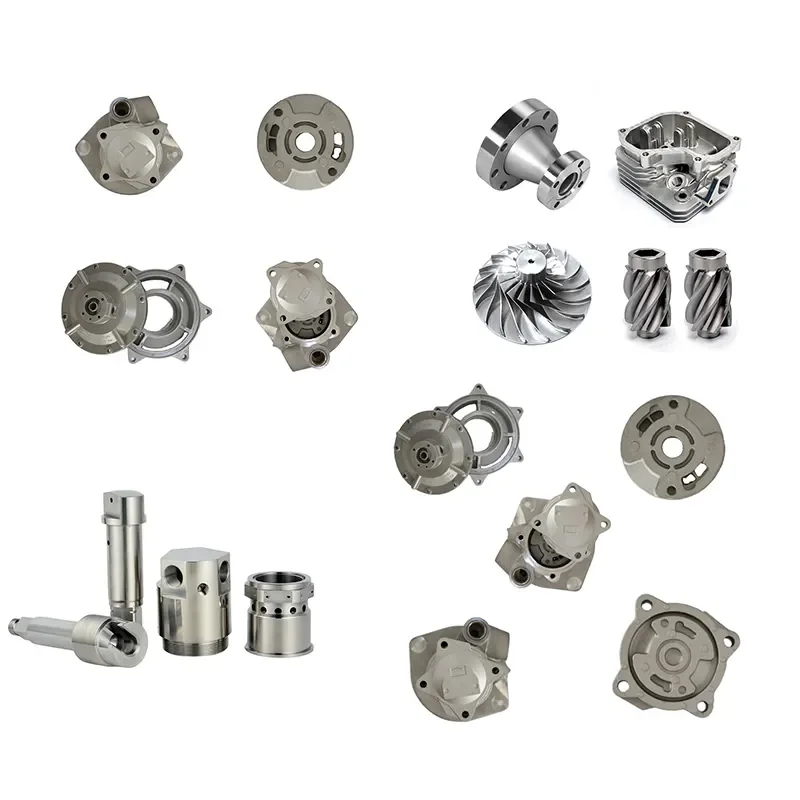- This topic is empty.
-
AuthorPosts
-
2025-07-15 at 6:21 pm #4163
In modern manufacturing industries where performance, efficiency, and quality are paramount, investment casting stands out as a leading technology for producing complex and accurate components. In this blog post, as a high quality custom casting parts manufacturer, Vibo will share the advantages of high precision investment casting parts for sale.
High Precision Investment Casting Parts Advantages
✔ High Precision – Tolerances as Tight as ±0.005 in (±0.127 mm)
One of the most prominent advantages of investment casting is its exceptional dimensional accuracy. Thanks to the use of high-precision molds derived from wax patterns and ceramic shells, the process can consistently produce parts with tight tolerances, typically as accurate as ±0.005 inches (±0.127 mm).
This precision eliminates the need for extensive machining or post-processing. For applications such as turbine blades, surgical instruments, or military components where dimensional integrity is critical, investment casting ensures that every component conforms closely to the original CAD design. The ability to achieve such precision is vital in reducing assembly errors, enhancing performance, and ensuring longer operational life.
✔ Excellent Surface Finish – Typically 125–250 µin (3.2–6.3 μm Ra) Without Machining
Another significant benefit is the superior surface finish of investment cast components. Compared to sand casting or forging, the lost-wax method yields much smoother surfaces—often within the range of 125–250 microinches (3.2–6.3 μm Ra)—without the need for secondary machining or grinding.
This smooth surface not only enhances the aesthetic appearance of the parts but also reduces friction and wear in dynamic applications. In industries like aerospace and automotive, where aerodynamics and fuel efficiency matter, a smooth surface finish helps reduce drag. In hydraulic and fluid-handling components, it minimizes turbulence and enhances flow characteristics.
✔ Complex Geometries – Thin Walls, Internal Passages, and Intricate Details
High precision investment casting excels in producing complex geometries that are difficult or impossible to achieve with traditional manufacturing techniques. The process supports the creation of thin-walled structures, fine details, undercuts, and internal cavities, all in a single operation.
This geometric flexibility is invaluable for designers looking to reduce component weight, consolidate multiple parts into one, or integrate features such as cooling channels, lattice structures, or organic shapes. For instance, in aerospace applications, where weight-to-strength ratio is paramount, investment casting allows engineers to design parts with optimized structures that do not compromise mechanical integrity.
Moreover, the design freedom opens up new possibilities in the biomedical field, where prosthetics, dental implants, and orthopedic devices must conform to precise anatomical geometries.
✔ Wide Material Compatibility – Stainless Steel, Aluminum, Titanium, Superalloys, and More
Investment casting offers broad material compatibility, making it suitable for a wide range of industrial needs. This process can handle a variety of metals and alloys, including:
* Stainless steel – widely used for its corrosion resistance and mechanical strength
* Aluminum – ideal for lightweight applications
* Titanium – prized in aerospace and medical sectors for its strength-to-weight ratio and biocompatibility
* Superalloys (e.g., Inconel, Hastelloy, cobalt-based alloys) – essential in high-temperature and corrosive environments
This versatility allows manufacturers to select the most appropriate material based on the application's requirements, be it corrosion resistance, heat resistance, strength, or machinability. Furthermore, the material' s mechanical properties remain uncompromised during the casting process, ensuring reliability and performance in the final part.
✔ Minimal Machining Required – Reduces Post-Processing Costs
Due to the high dimensional accuracy and excellent surface finish achieved during the casting stage, investment cast parts require minimal post-processing. This reduces or even eliminates secondary operations such as drilling, milling, or grinding—saving time, reducing tooling costs, and minimizing material waste.
For high-volume production runs, this leads to significant cost savings and faster turnaround times. Moreover, the reduced need for machining helps preserve the integrity of the part, especially in applications where structural uniformity and stress distribution are crucial. In industries such as defense and aerospace, minimizing material alteration is essential for maintaining component reliability under load.

Additional Benefits of High Precision Investment Casting
✔ Design Consolidation
Investment casting allows for the integration of multiple components into a single part. This not only simplifies assembly but also reduces the risk of failure at joints and interfaces, leading to improved structural integrity and performance.
✔ Scalability
The process is highly scalable and can be used for both small and large production volumes. Whether manufacturing a few medical implants or thousands of turbine blades, investment casting provides consistent quality and repeatability.
✔ Waste Reduction
Unlike subtractive manufacturing methods, investment casting is a near-net-shape process. This means minimal excess material is removed, leading to less material waste and greater sustainability. Combined with recycling practices for wax and shell materials, the process has a relatively low environmental impact.
✔ Customization and Prototyping
Investment casting is well-suited for producing custom components and prototypes, especially when design complexity and material performance are critical. Rapid prototyping technologies like 3D-printed wax patterns can also accelerate the development cycle.
Conclusion
High precision investment casting has established itself as a versatile, cost-effective, and high-quality manufacturing process that meets the rigorous demands of today' s industries. Its ability to deliver tight tolerances, smooth finishes, complex shapes, and material flexibility makes it ideal for sectors where performance, precision, and reliability cannot be compromised.
By reducing the need for machining, enabling innovative designs, and supporting a wide range of materials, investment casting helps engineers and manufacturers push the boundaries of what is possible in product development. As advanced applications continue to evolve, investment casting will remain a cornerstone technology for turning bold design concepts into durable, high-performance components.
-
AuthorPosts
- You must be logged in to reply to this topic.

